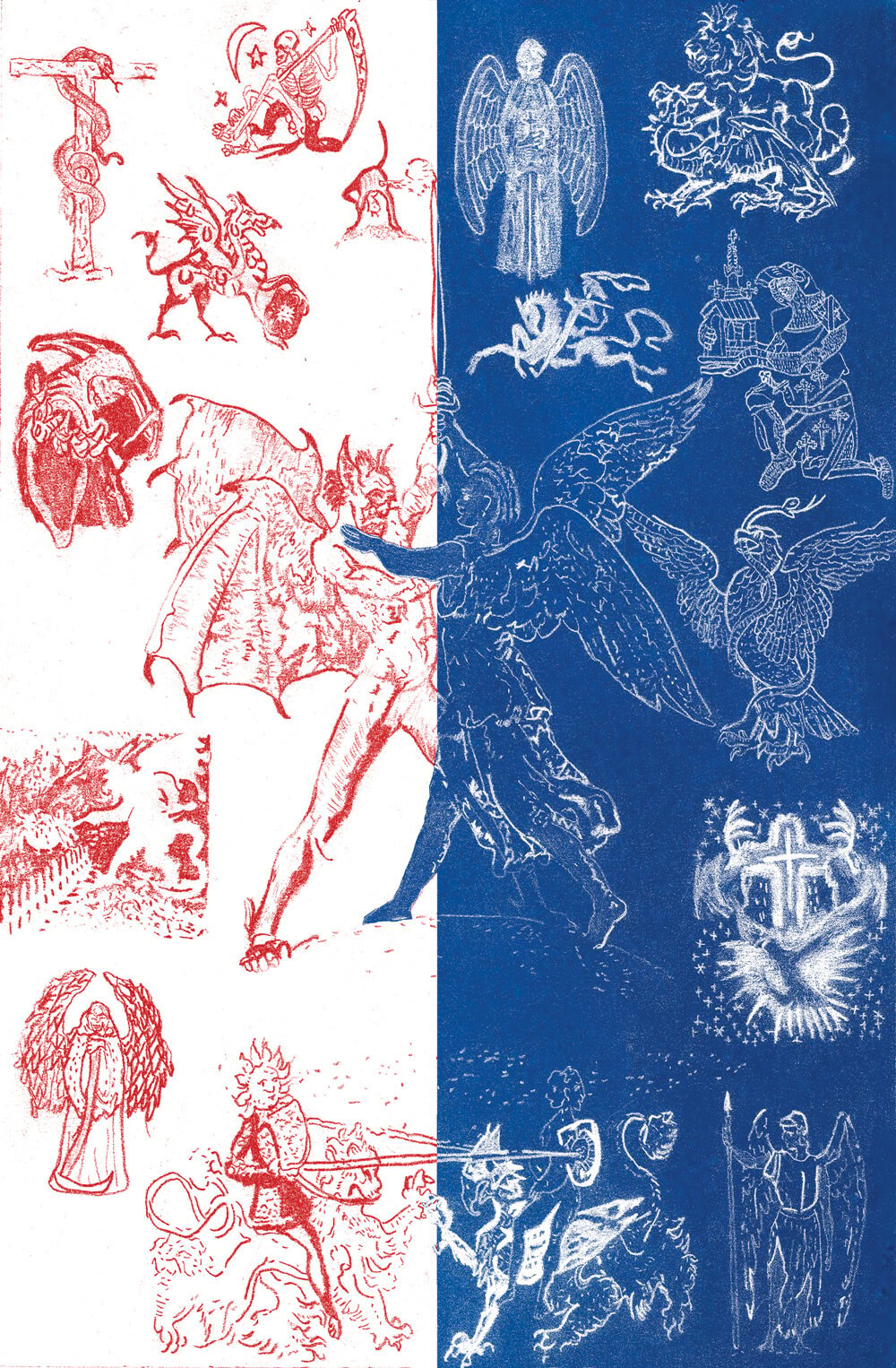
Wagnermania
When the revolution came to Dresden in 1849, Richard Wagner greeted it with unhinged ecstasy. “Whatever stands, must fall,” the thirty-five-year-old court conductor wrote that April in the radical periodical Volksblätter. “I will break the power of the mighty, of law, of property . . . I will destroy all rulership of one over other.” As Dresden’s radicals rose up in May, Wagner swung into action, acting as a lookout and helping secure weapons. Accompanying him in these duties was the Russian revolutionary Mikhail Bakunin, later cited by George Bernard Shaw as the model for Siegfried, anarchic Übermensch of the Ring cycle.
In the wake of the uprising’s suppression, Wagner evaded a probable death sentence by fleeing to Switzerland, where he lived in exile for a decade—composing, polemicizing, and sponging off wealthy acquaintances. There he embarked on the sixteen-hour operatic tetralogy Der Ring des Nibelungen, at once timeless mythic cosmology and biting commentary on unfolding political events. The Ring cycle narrates the history of the world from the primal fall, through the age of the gods, to the apocalyptic conflagration that will one day consume them. But its primal fall is a transparent allegory for the birth of capitalism; its gods are the European aristocracy; and its apocalypse is the revolution Wagner gleefully imagines sweeping them away.
Twenty-five years later, Wagner cut a very different figure. By 1874, when he completed the Ring, the former exile was back home in Germany, a celebrity nicknamed “the Meister” for his oracular authority. That year he moved into a villa in the provincial town of Bayreuth, where King Ludwig II of Bavaria funded a festival dedicated entirely to his work. Wagner envisioned the new theater there—with its egalitarian seating arrangement, concealed orchestra pit, and immersive dim lighting—as a democratic temple of art, open to anyone willing to make the pilgrimage. King Ludwig and Kaiser Wilhelm I were in attendance when Bayreuth opened in 1876, with a premiere of the completed Ring. By the time Wagner died in 1883, it had become a luxury destination for the upper classes he’d once fantasized about sending to the tumbrils.














